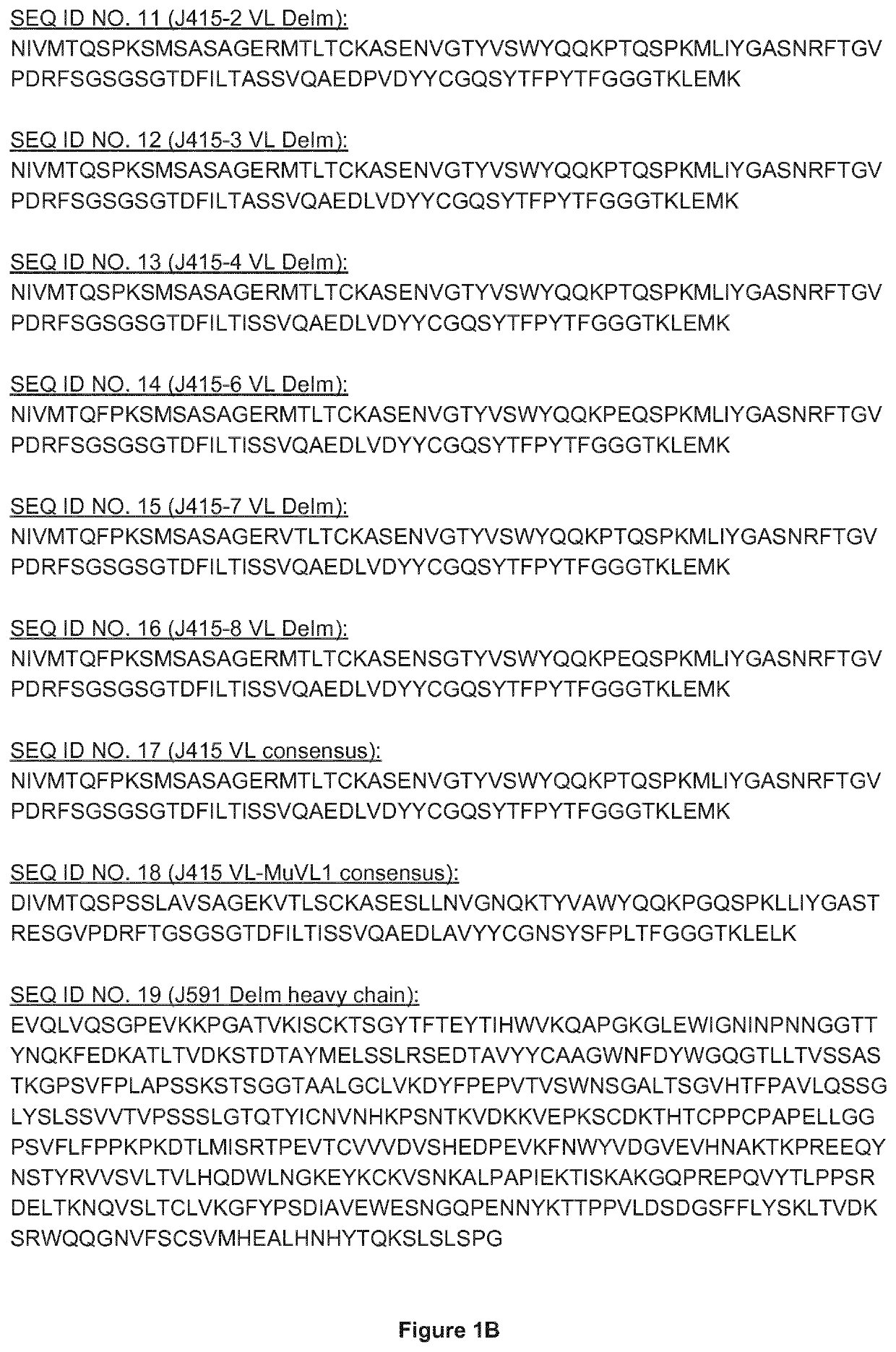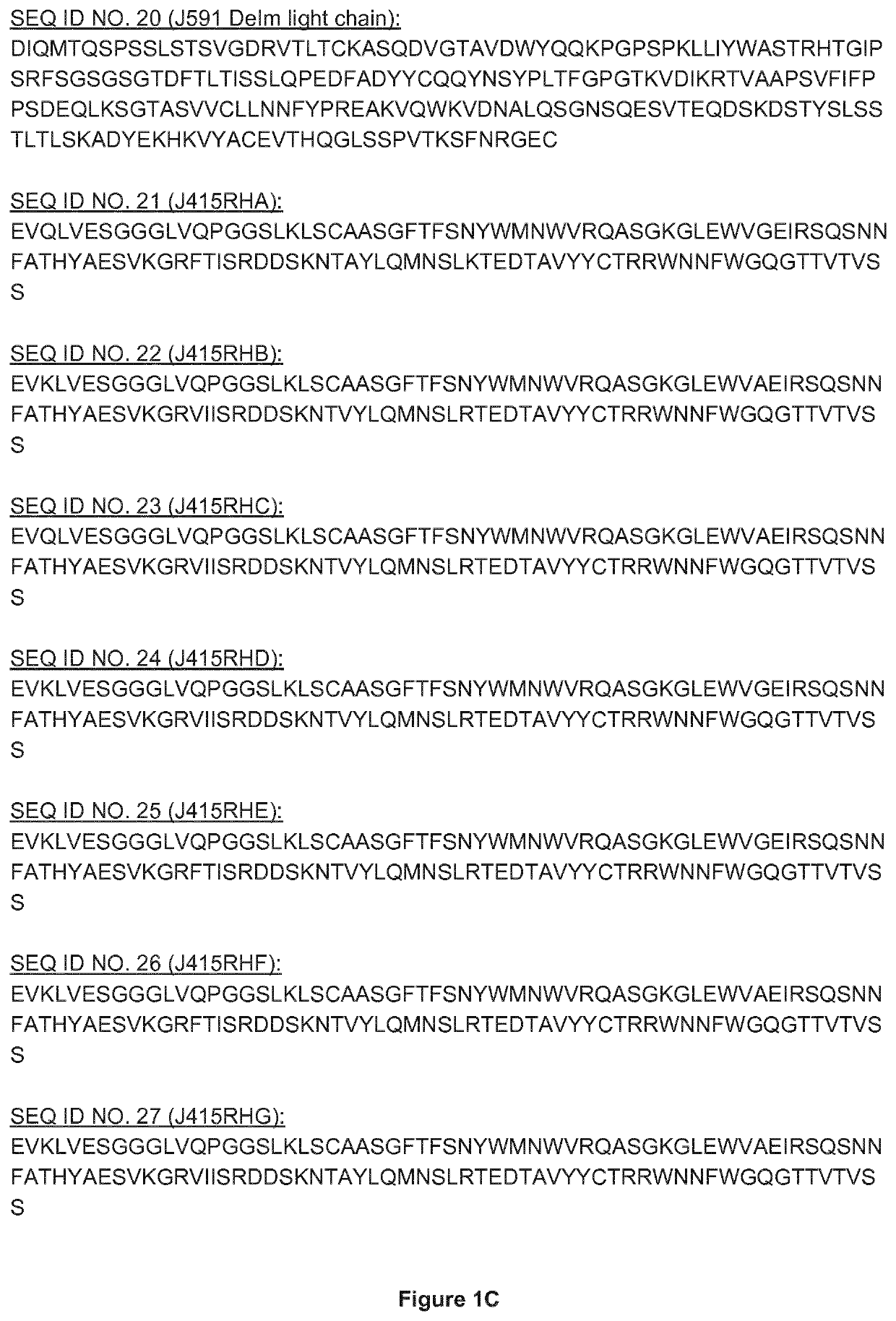Combination therapy with an Anti-psma antibody-drug conjugate
a conjugate and antibody technology, applied in the field of pathological conditions, can solve the problems of inability to achieve the effect of reducing cell motility and invasion, inability to use psma enzyme inhibitors in the past, and inability to achieve meaningful effect on tumour cell growth in animal models
- Summary
- Abstract
- Description
- Claims
- Application Information
AI Technical Summary
Benefits of technology
Problems solved by technology
Method used
Image
Examples
example 1
[0776]To show that a PBD-ADC can induce ICD and therefore can be a suitable combination agent with immune-oncology (10) drugs, cell lines expressing a first target protein (FTP), will be incubated for 0, 6, 24 and 48 hours with etoposide (negative control) and oxaliplatin (positive control), 1 μg / mL ADC, 1 μg / mL anti-FTP (the antibody in ADC) and 1 μg / mL of B12-SG3249 (a non-binding control ADC with the same PBD payload as ADC).
[0777]After Incubation, the amount of AnnexinV− / PI+(early apoptotic cells) will be measured by Flow cytometry together with the upregulation of surface calreticulin and HSP-70. ER stress will be measured by Northern blot analyses of IRE1 phosphorylation, ATF4 and JNK phosphorylation.
example 2
[0778]In a separate experiment, cell lines expressing FTPs will be incubated for 0, 6, 24 and 48 hours with etoposide (negative control) and oxaliplatin (positive control), 1 μg / mL ADC (ADC targeting FTP with a PBD dimer warhead), 1 μg / mL anti-FTP (the antibody in ADC) and 1 μg / mL of B12-SG3249 (a non-binding control ADC with the same PBD payload as ADC).
[0779]After incubation, the cells are washed, and fed to human Dendritic cells (DCs) for an additional 24 h. Activation of the DCs is subsequently measured by increased surface expression of CD86 on the DC population (as determined by Flow cytometry) and by measuring DC mediated release of IL-8 and MIP2.
example 3
[0780]The purpose of this study is to preliminarily assess the safety, tolerability, pharmacological and clinical activity of this combination
[0781]The following cancer types have been chosen for
[0782]study: Disease A, Disease B, and Disease C
[0783]Evidence for efficacy as single agents exists for both drugs:[0784]ADC (see, for example, WO20141057113 and WO2016 / 166299)[0785]Secondary agent (see KS Peggs et al. 2009, Clinical and Experimental Immunology, 157: 9-19 [doi:10.1111 / j.1365-2249.2009.03912.x])
[0786]This primary purpose of this study is to explore whether these agents can be safely combined, and if so, will identify the dose(s) and regimens appropriate for further study. The study will also assess whether each combination induces pharmacologic changes in tumor that would suggest potential clinical benefit.
[0787]In addition, it will provide preliminary evidence that a combination may increase the response rate and durability of response compared with published data for treatm...
PUM
 Login to View More
Login to View More Abstract
Description
Claims
Application Information
 Login to View More
Login to View More - R&D Engineer
- R&D Manager
- IP Professional
- Industry Leading Data Capabilities
- Powerful AI technology
- Patent DNA Extraction
Browse by: Latest US Patents, China's latest patents, Technical Efficacy Thesaurus, Application Domain, Technology Topic, Popular Technical Reports.
© 2024 PatSnap. All rights reserved.Legal|Privacy policy|Modern Slavery Act Transparency Statement|Sitemap|About US| Contact US: help@patsnap.com










